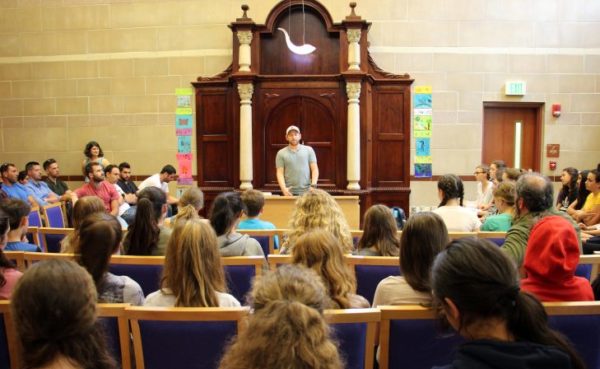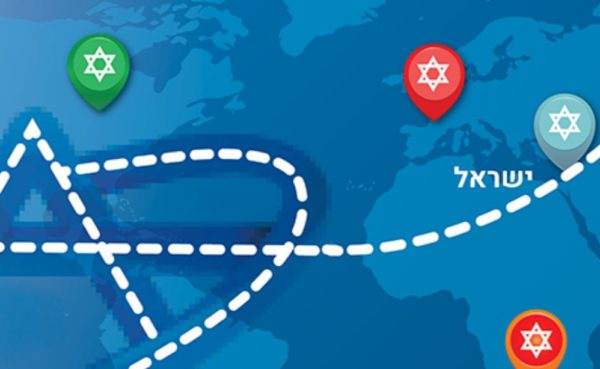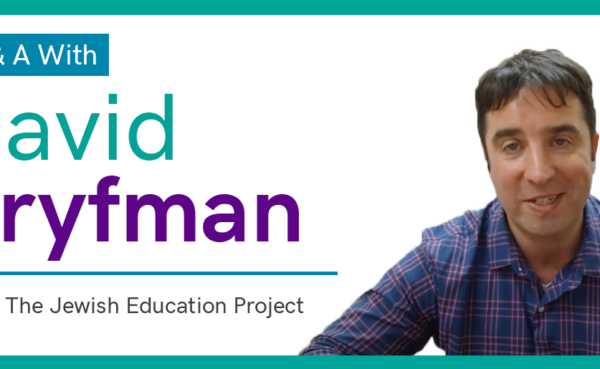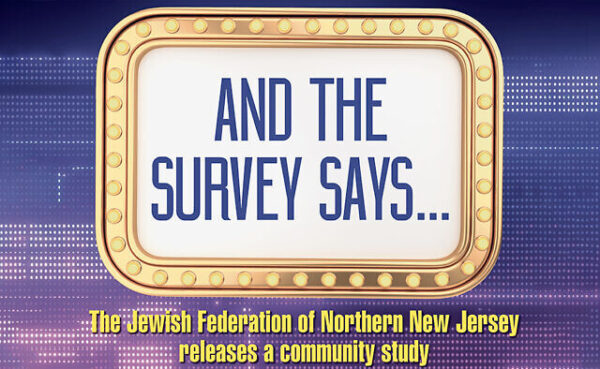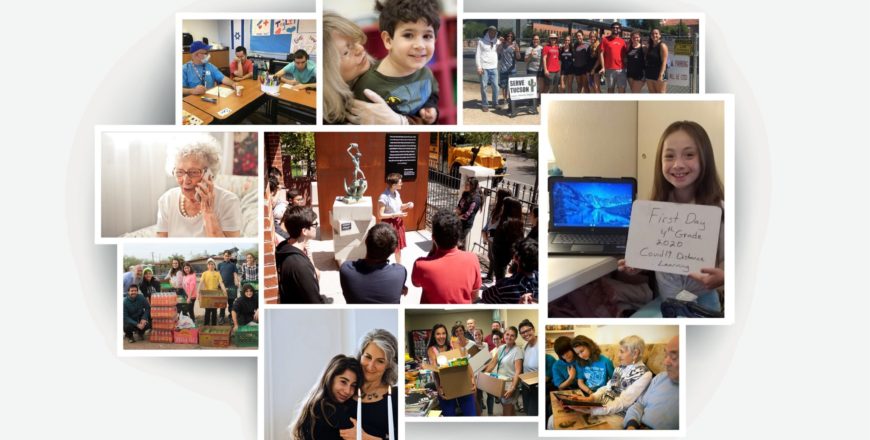
Local Jewish community planners aim for ‘bigger tent’ with ‘Pathways’ document, working groups
This article about Rosov Consulting Consulting’s work with the Southern Arizona Jewish Community appeared in the Arizona Jewish Post.
By Phyllis Braun, Arizona Jewish Post
How can the Southern Arizona Jewish community shape a future that engages, fulfills, and sustains more people than ever before, in this generation and the generations to come?
A newly released 21-page document called “Southern Arizona Jewish Community: Pathways to Enriching Jewish Life” aims to answer this question. Developed by Jewish Federation and Jewish Community Foundation staff, Rosov Consulting, and a strategic planning steering committee, the document is a vital step in the data-driven strategic planning and visioning process convened by JFSA/JCF.
The process began in spring 2019 with representatives of Rosov Consulting, which specializes in Jewish community work, visiting Tucson to familiarize themselves with the community and hold stakeholder meetings with local professional leaders and institutions. Then, based on their initial meetings as well as the findings from focus groups with 150 members of under-represented or less-engaged populations, Rosov Consulting worked with the steering committee of lay leaders and professionals to create a needs-assessment survey that was completed by more than 1800 people in Southern Arizona in February and early March. With in-person meetings on hold because of COVID-19, information from the survey was shared in an executive summary and a webinar, then explored in “meaning-making” Zoom meetings with diverse members of the community.
Lindsey Baker, who joined JFSA/JCF as chief operating officer in May, says it was a privilege to have such robust data from the survey when she started. “This really was groundbreaking study for our community,” she says, noting that having data at the center of the planning process is even more important in a year that has brought so much change in the local community and the world.
The recently released document distills the the process thus far, presents areas of consensus that emerged from the data, and outlines three focus areas: “Drive Toward a Community-Wide Approach to Jewish Education,” “Elevate and Embrace Diverse Approaches to Jewish Life — Spiritual, Cultural, and Values Driven,” and “Pursue Tzedek and Tikkun Olam Through Community Service, Social Justice, and Social Action.” These can be broadly described as education, celebration, and caring. The Pathways document delineates what was learned in each area, paths to explore, and potential resources and models from around the country.  A graphic version summarizes key ideas (click on the image to see a full-size version).
A graphic version summarizes key ideas (click on the image to see a full-size version).
Each area will result in multiple outcomes, or pathways, says Graham Hoffman, JFSA/JCF president and CEO. “It’s being left to our community to decide how to prioritize, and where to go,” he explains. Working groups of volunteers from diverse backgrounds and age ranges have been formed to explore each area and come up with two or three bold but actionable recommendations early in 2021, to be followed by implementation plans and pilot programs. The status of the coronavirus pandemic may mean some programs must be postponed or begin virtually, but planners are forging ahead with a long-term perspective.
The paths also overlap; for example, one recommendation for the celebrations working group is to “integrate community service and social justice into educational offerings and micro-community activities,” which ties in themes from the education and caring focus areas.
“Engagement in Jewish life, be it cultural, religious, charitable, social, or learning, is probably the single most important aspect of the visioning process because it is so broad,” says Anne Hameroff, chair of the JCF board, who is a strategic planning steering committee member and co-chair of both the education working group, with Shelly Silverman, and the celebrations working group, with Deborah Oseran.
“The single overriding piece of information that we learned is that people want to engage in a multitude of ways, and they want fewer barriers to entry.
“For some, particularly in the younger demographic, that barrier might be cost. For others, it is membership, or dues, or geographic, or simply openness. But the bottom line is we need to be a bigger tent and welcome everyone we possibly can with a variety of opportunities. Obviously, in the pandemic, it is not possible. But rest assured, many of us are using this time to figure out how to meet the needs of the community in a new and engaging way,” Hameroff says.
Drive Toward a Community-Wide Approach to Jewish Education
The education group, which Hoffman is staffing, has elected to focus first on Jewish education for school age children, with programs for adults and teens to follow. The data indicates that people are interested in a community-wide educational program, and Hoffman says many congregations have shown “excited interest” in the idea.
“If we were to just pilot something in the fall that represented the co-location of religious school offerings from around the community in one space where the kids could have structured time together from across the congregations” before breaking out into their usual religious school groups, “that would still be a very positive step forward,” says Hoffman.
Taking it further, one model that’s been recommended would provide afterschool care at the Tucson Jewish Community Center — which already has its J-Care afterschool program and transportation network — or at Tucson Hebrew Academy, or a partnership between them. The proposal would include a religious education component five days a week along with homework help and recreation. This would create a religious school offering “that wouldn’t necessarily have to cost more than a typical aftercare,” says Hoffman, while appealing to families that are looking for a program that combines both.
Elevate and Embrace Diverse Approaches to Jewish Life — Spiritual, Cultural, and Values Driven
Aviva Zeltzer-Zubida, Ph.D., the Federation’s vice president for planning and community engagement, staffs the working group focusing on ways to celebrate various aspects of Jewish spirituality, culture and values.
Across all of the focus areas, she says, the Pathways document provides a way to bridge the gap between the high level of interest in Jewish life the survey, interviews, and meetings revealed, and the relatively low levels of actual participation.
“The findings represent the voice of many, many types of Jewish people in [Southern Arizona] that are not necessarily currently active in any shape or form in the organized community,” she notes.
The document calls for dramatic changes, she says, moving from an agency/organization/synagogue-based perspective, to one that looks at Jewish life from the perspective of individuals from various demographics, and their “needs, wants, desires, and behavior patterns.”
“It’s really moving from organizational focus to impact focus,” she says, noting that communities across the country are grappling with this shift.
One proposal that comes from the data is to have community-wide holiday celebrations such as a Purim carnival in a park or a big Passover seder, which can involve not only the vast majority of Jews in Southern Arizona, who the data shows do not belong to any synagogue, but potentially also non-Jewish people.
Such celebrations would be “not instead of the synagogues, but with the synagogues,” Zeltzer-Zubida emphasizes.
Pursue Tzedek and Tikkun Olam Through Community Service, Social Justice, and Social Action
With the working groups on separate timetables, this one recently held an initial icebreaker meeting. Baker, who staffs the group, is pleased by its diversity, which includes a wide range of ages and backgrounds, from members who’ve been involved in the community for decades to others relatively new to Jewish communal life.
“The Pathways document identified the need in our Jewish community to provide support and resources for underserved and sometimes, under engaged, populations (those that were identified by participants in the community survey). Our committee is currently assessing where the greatest opportunities are for programming that will support these populations and will most likely start by focusing on a particular demographic cohort,” says Helaine Levy, who is co-chairing the caring working group with Jeff Katz.
Populations cited in the document include interfaith families, LGBTQ individuals, millennials, and young adults.
“We intend to address gaps in service to the target population groups by building on the relationships with Jewish agencies and by potentially partnering with broader community organizations who serve these target populations. In addition, we’re looking at ways to engage the broader Jewish community through social action activities that may initially tie into the underserved populations that we identify or may be one-off projects that will support a completely different target population. There were a significant number of community planning survey respondents who identify Jewishly through social action volunteer work,” Levy explains.
A fourth working group dubbed “Strengthen the Communal Infrastructure” will be created later, to support the work of the other groups.
“It’s important for our entire community to understand that these working groups are acting on behalf of the interests of the community and are making recommendations based on the considerable data we have gathered from the survey and throughout the process,” Hoffman says. “The opportunities and offerings that emerge from this process will be the community’s and will be facilitated, organized, and operated by agencies, synagogues, or a collaboration between and among them. We are championing the clear consensus of our community to not simply maintain the status quo — but to chart a new course, one that embraces and reflects the diversity, evolving interests, and unique needs that have clearly emerged from the outpouring of input we have received.”
